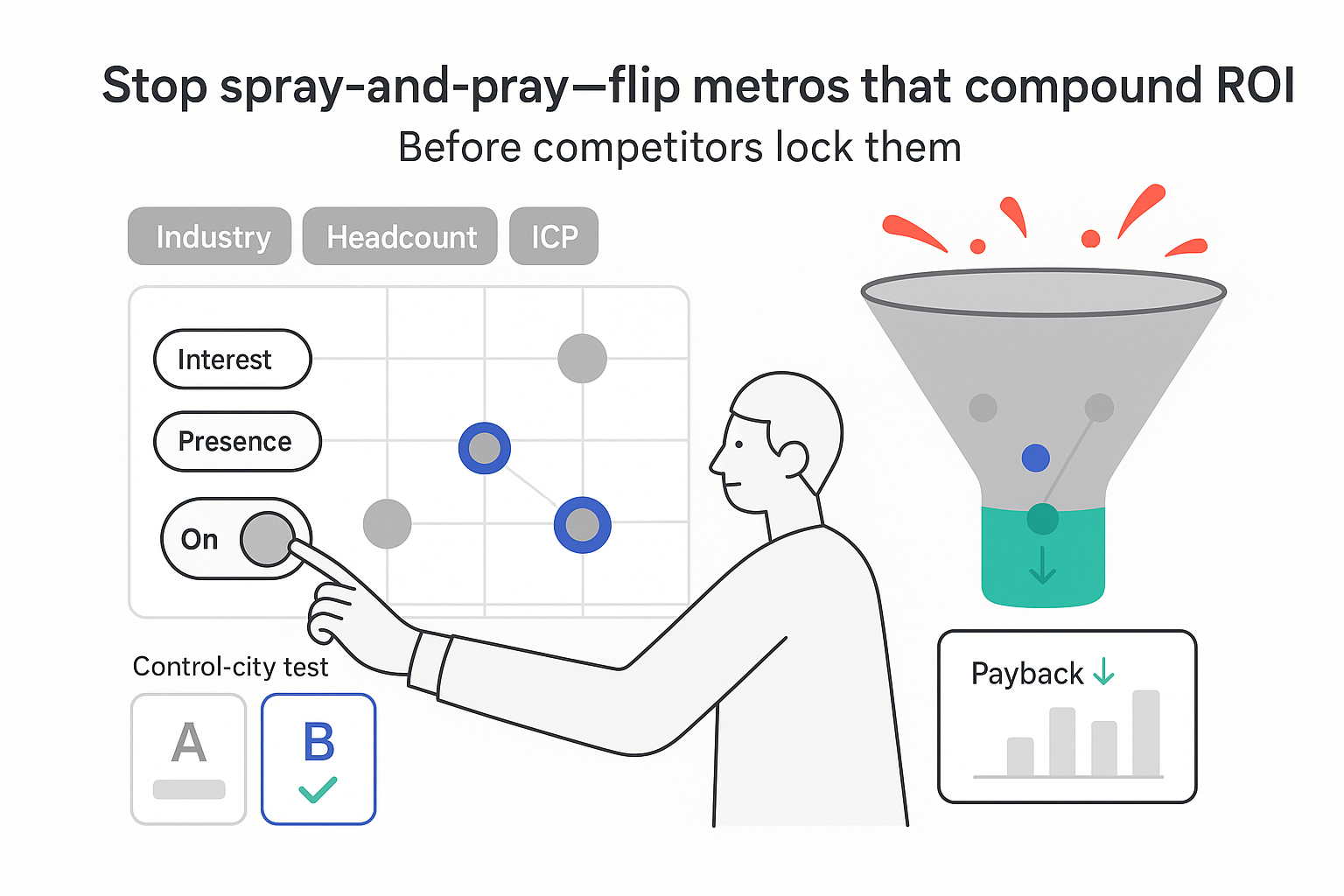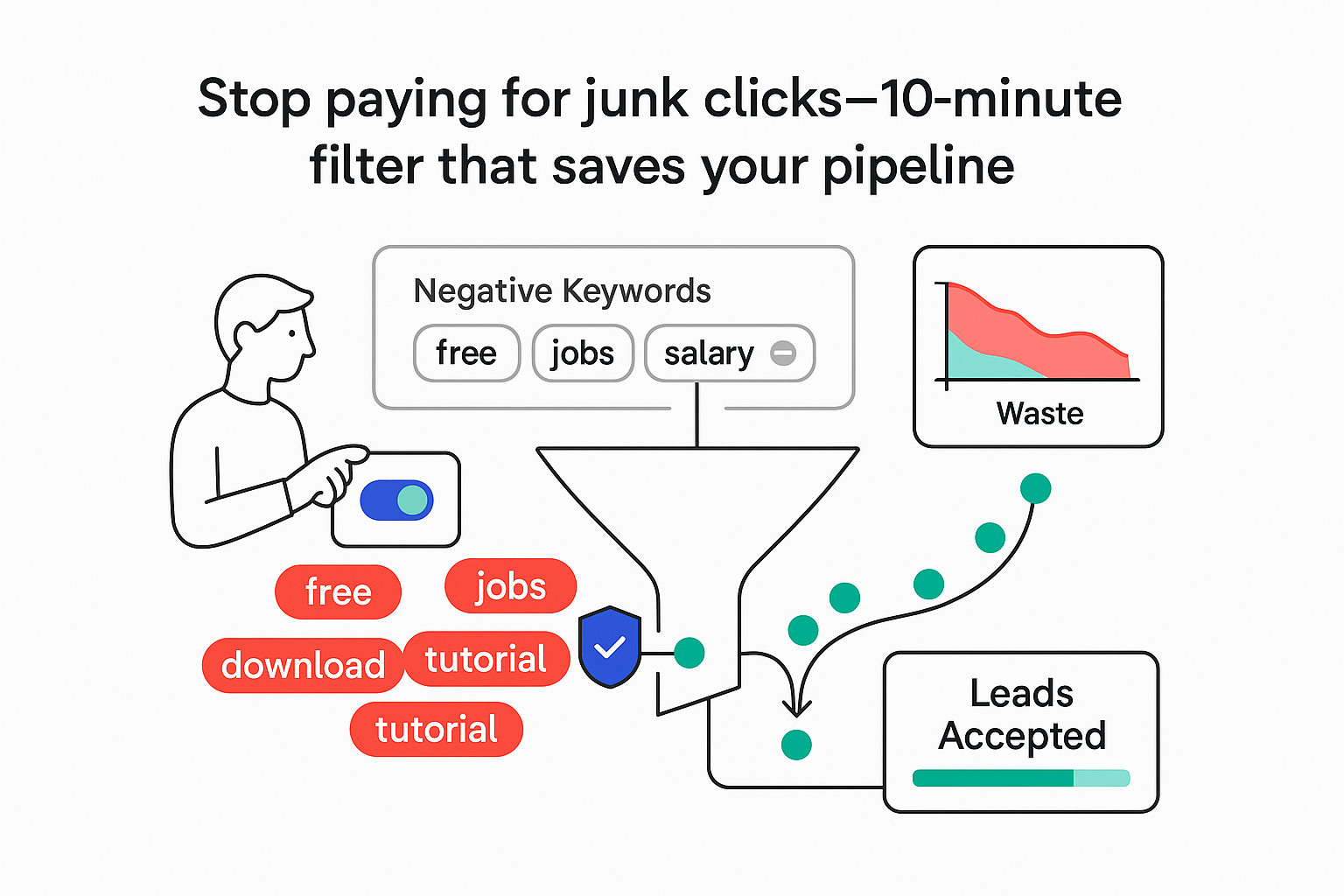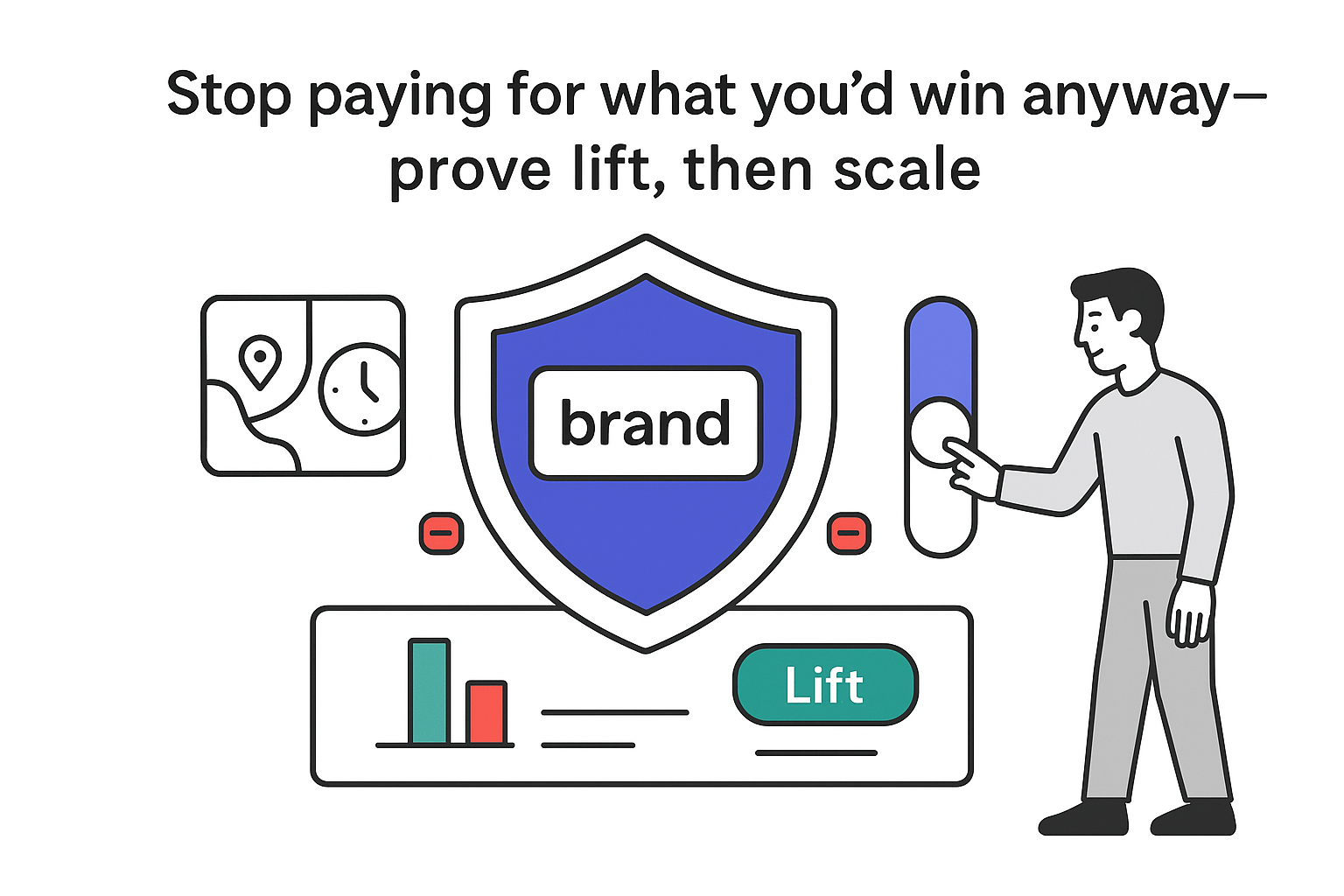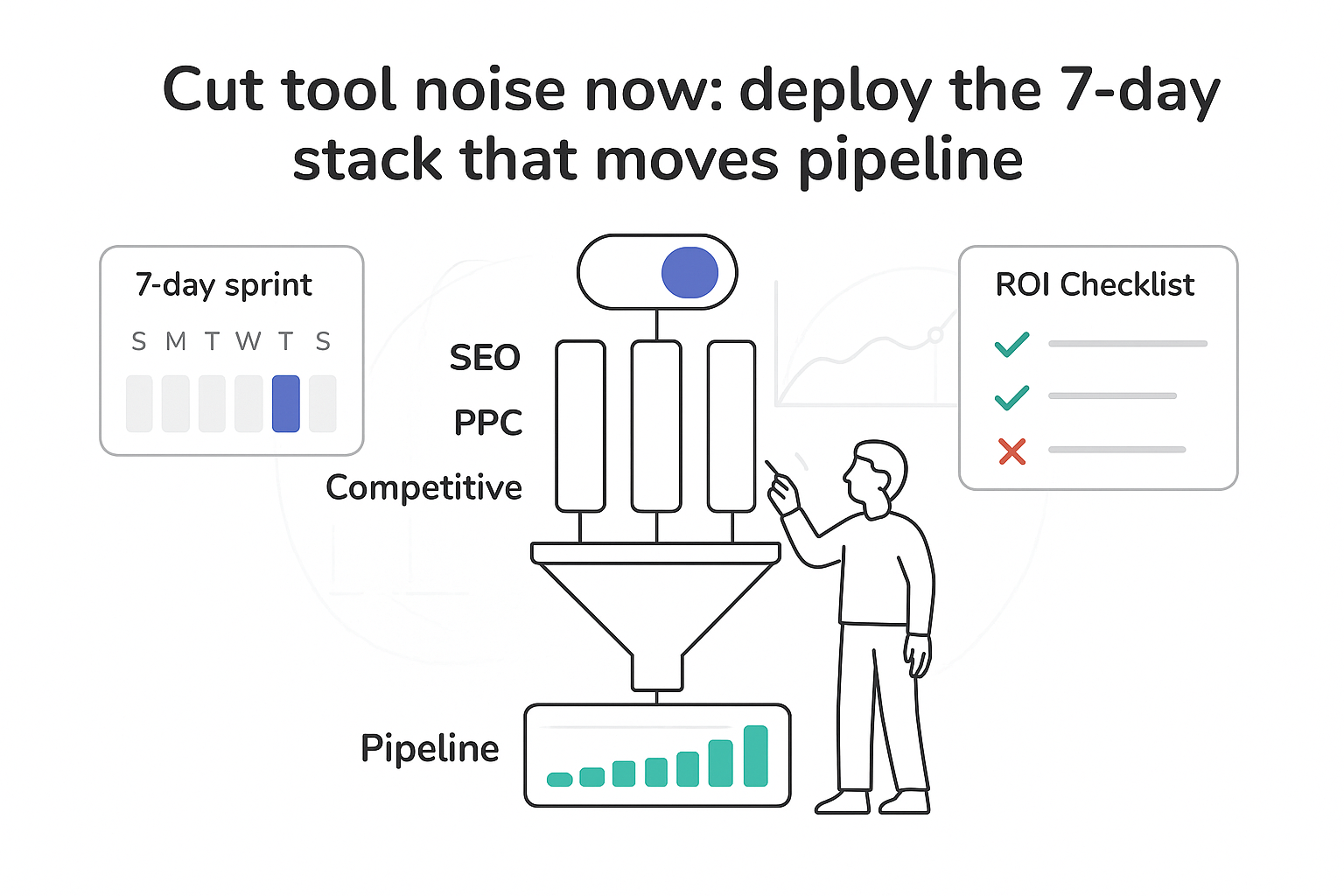If you run a B2B service business, you do not need more content for content's sake. You need ideas that turn into pipeline, not vanity metrics. The right B2B content marketing ideas reduce CAC, shorten sales cycles, and create a steady flow of qualified conversations for your team. The trick is simple to say, tougher to do: build proof, answer buying questions, and ship assets sales can use tomorrow.
How I generate B2B content marketing ideas
My time is scarce, and results matter. So I use an ROI-first lens, ranked by speed to revenue and confidence of impact. The common thread is proof-driven assets and distribution that meets buyers where they already spend time.
Priority shortlist, ordered by bottom-of-funnel impact:
- Case studies mapped to the top ICP segment
- Comparison pages for high-intent searches
- An ROI calculator embedded on BOFU pages
- Problem-led webinars with customer co-hosts
- Industry research that earns links and trust
- Founder-led LinkedIn to distribute everything
- A repurposing workflow so nothing sits idle
A simple framework I hand to a team:
- ICP pain points: list the top five blockers tied to budget and timeline
- BOFU topics: write the pages buyers search before they talk to sales
- Proof assets: case studies, calculators, comparison pages
- Distribution: partner channels, social, sales enablement, light retargeting
I keep the plan lightweight: one backlog tied to real sales objections, one production tracker, and one performance view showing pipeline, win rate, and payback. If an idea does not move at least one, I drop it or reshape it.
Case studies: the fastest path to credible proof
If I want fast movement in pipeline, I start here. Case studies are pure BOFU. They convert because they answer the quiet question in every buyer's head: will this work for a company like mine, at my size, with my constraints?
I use a reliable structure:
- Client: company, industry, ACV band, and key context
- Problem: triggers, pain, and what was at risk
- Solution: approach, scope, and integrations
- Timeline: start date, milestones, go-live date
- Results: clear numbers with before/after
- Quotes: the economic buyer and the primary user
- Screenshots: dashboards, timelines, tools in use
- Related use cases: two to three links for similar scenarios
Metrics I include when I can share them:
- Pipeline influenced and sourced
- Win rate lift and sales cycle change
- CAC payback and LTV:CAC
- Cost per opportunity and channel mix shifts
Shorter case studies get read more often, yet longer ones build more confidence. I resolve that by leading with a tight summary and placing the deeper narrative below the fold. A "related use cases" module helps buyers self-qualify.
Minimum viable SEO and schema
- Use JSON-LD CaseStudy markup with fields like name, industry, and outcome
- Internally link to relevant comparison pages and the ROI calculator
- Add alt text on screenshots that names the KPI visible
Simple CaseStudy schema starter
{
"@context": "https://schema.org",
"@type": "CaseStudy",
"name": "How ACME Consulting cut CAC payback to 3 months",
"industry": "B2B SaaS",
"description": "Client reduced CAC payback from 8 to 3 months within two quarters by revamping inbound and sales enablement.",
"startDate": "2024-02-01",
"endDate": "2024-08-01",
"audience": { "@type": "BusinessAudience", "industry": "Software", "audienceType": "Mid-market" },
"provider": { "@type": "Organization", "name": "Your Company" },
"result": "42% increase in SQLs, 19% higher win rate",
"url": "https://yourdomain.com/case-studies/acme-consulting"
}Comparison pages: meet high-intent buyers
Buyers search these when they already have budget and a shortlist. I build X vs Y vs Your Company pages that are fair, transparent, and genuinely helpful. I do not force a winner - I let the reader see where each option shines.
I include:
- Feature tables with plain-language notes
- Pricing ranges (not just "contact sales")
- "Best for" by company size, use case, and tech stack
- Migration notes: time to switch, data import, support model
- Common questions: implementation, integrations, security review, data retention
I treat these as money pages. Useful modules - a brief video walkthrough, a short product tour, and links to relevant case studies - lift conversions. For search basics, I map one primary query per page, use comparison keywords early, and add pros/cons that read like real talk from sales calls. Structured data like ItemList for alternatives and FAQPage for common questions helps clarity.
ROI calculators: personalize the business case
Interactive calculators work because they personalize value. Prospects already estimate savings or growth in a rough spreadsheet. I provide a clean tool that runs the math fast and explains the logic.
Typical inputs:
- Average deal size and close rate
- Current monthly traffic and conversion rates
- Sales cycle length and team size
- Program costs and time to ramp
Outputs that matter to leaders:
- Pipeline, revenue, and payback period
- SQL volume and win rate impact
- ROI with confidence ranges using presets
Methodology notes
- I share the formula in simple language
- I include segment presets so users can compare
- I add an assumptions toggle so power users can adjust inputs
Example math line: projected pipeline = traffic × conversion rate × close rate × average deal size. Payback = total program cost ÷ monthly net revenue gain.
Practical touches like optional PDF export, strategic placement on comparison and service pages, and assisted-conversion tracking in your analytics platform help you attribute influence without friction. Screenshots from the calculator can seed short social posts and sales decks.
Research and repurposing: compounding assets
Original data earns links, trust, and attention - and it feeds sales with talking points that age well. I aim for an annual flagship report and, if bandwidth allows, a smaller quarterly pulse. Industry studies consistently show that credible thought leadership affects consideration and RFP inclusion, especially in complex deals.
How I plan research
- Methodology: survey the ICP or analyze first-party platform data
- Sample size: 250+ responses for directional confidence
- Segmentation: company size, ACV band, sales cycle, role
- Questions: a mix of benchmarks, budget shifts, tool stack patterns, and outcomes
- Deliverables: an ungated summary page plus deeper assets for those who want detail
For distribution, I pitch three clear story angles to relevant media and newsletters, equip partners with co-branded charts, brief sales with a short cheat sheet, and publish social carousels that tease a single counter-intuitive stat. I make citing easy with PNG charts (descriptive alt text), an embed code, and access to the underlying data. Keyword research around the report theme helps the summary page rank and support related BOFU assets.
Then I repurpose to maximize yield
- A webinar that walks through the problem and findings with a customer
- A case study that proves the approach with hard numbers
- An explanatory post on when and how to apply the insight
- Short social clips that tease the key metric and the method
- A concise sales one-pager for the next call
I map each asset to a funnel stage and track yield per source asset: traffic, qualified leads, influenced pipeline, revenue, and time to first result. The winners get more investment.
Distribution that actually moves pipeline: webinars and LinkedIn
Distribution is where many B2B content marketing ideas stall. If I want reach without paid media, I build a founder-led cadence and anchor it with problem-led webinars.
For webinars, I keep theory short and show how it works, where it fails, and what it costs. A customer co-host adds credibility and detail.
A tight agenda
- The costly problem and who feels it most
- A practical walkthrough with a brief demo
- A customer story with metrics and screenshots
- A live Q&A that tackles pricing, implementation, and timing head-on
After the event, I publish on-demand video with a transcript to help search, cut 30–60 second clips for social, and link to the case studies, calculator, and relevant comparison pages. Basic Event schema helps search engines understand both the session and on-demand state. Seasonal relevance helps too: Q4 for cost control and payback; Q1 for quick wins and pipeline acceleration.
On LinkedIn, I post three to four times a week anchored to ICP pains:
- Time to value and onboarding friction
- Budget constraints and CAC payback
- Lead quality and sales cycle blockers
- Implementation and security approvals
Post formats that travel
- Carousels with one chart or one framework per slide
- Point-of-view posts on lessons from real deals won or lost
- Short clips cut from webinars or case studies
- Mini case study snapshots with one metric and one line of insight
I alternate native posts designed for comments and saves with occasional posts that link to BOFU pages. Current platform dynamics often reward discussion more than external clicks, so this balance preserves reach while still driving revenue activities. I track profile reach, clicks to BOFU pages, assisted conversions where LinkedIn is a first touch, and consultation requests attributed in the CRM. I also make it easy for colleagues to participate by providing short summaries they can adapt in their own voice.
Bringing it together: focus, ship, measure, iterate
I can brainstorm B2B content marketing ideas forever, but it is better to pick a few that feed each other. A practical starting bundle is two case studies for the top ICP, one comparison page aligned to the best bottom-of-funnel keyword, and a simple ROI calculator. I announce them through a crisp webinar and a month of founder-led LinkedIn, then repurpose every asset so nothing sits idle.
A few guardrails keep the plan sharp:
- Balance quality and speed with clear thresholds for "good enough" versus "needs polish"
- Capture stories in the wild - short customer interviews during QBRs age better than rewrites later
- Keep a backlog tied to real sales objections; if it closes deals, it deserves content
- Pair organic with low-spend retargeting so high-intent visitors see calculators and comparison pages again
Then I review the numbers, not just traffic. I look at pipeline, win rate, and payback. If an idea does not move at least one of those, I cut it or change it. When it does, I scale the playbook, not just the volume. That is how content begins to carry its weight, quietly, week after week.







.svg)